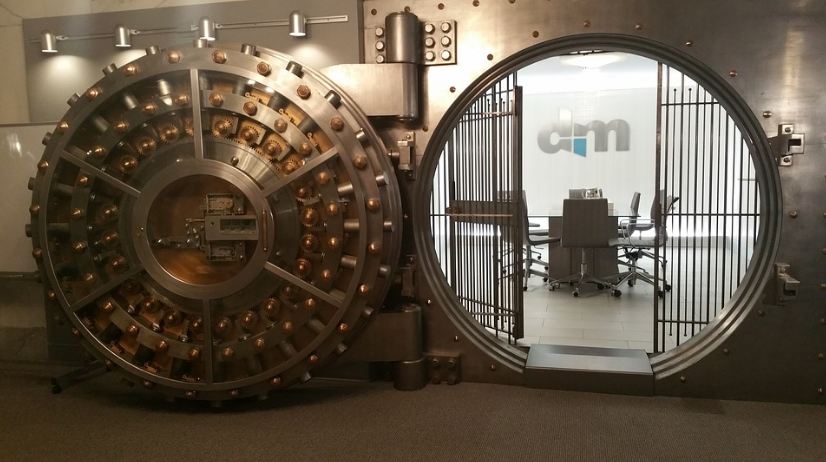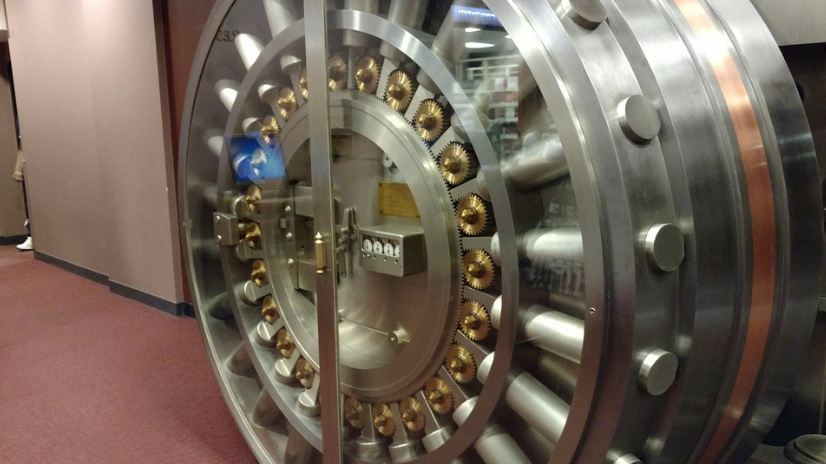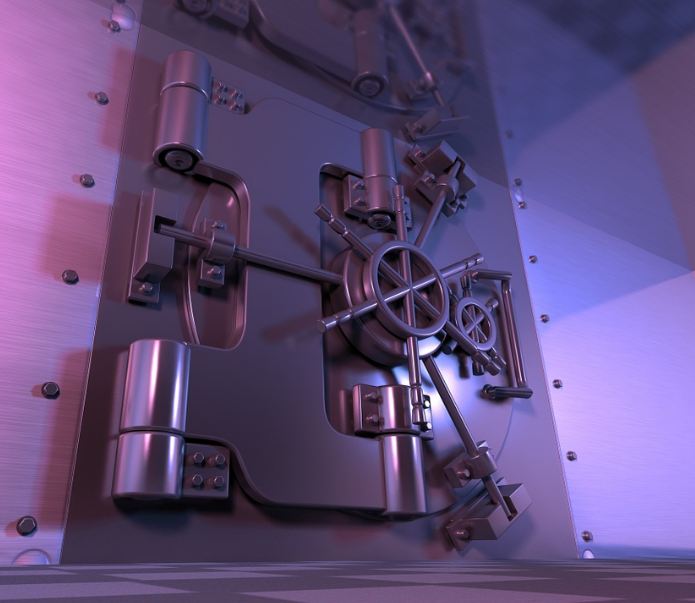A bank vault is a safe storage facility for money, assets, records, and papers. It works similarly to a safe in that it protects the contents from theft, illegal use, fire, natural catastrophes, and other risks. Vaults have reinforced walls and a carefully fashioned door with a complicated lock to protect its contents.
Vault technology evolved as a result of competition with bank thieves. As burglars devised new methods of breaking into vaults, vault makers devised new methods of preventing them- you can install a wide range of alarms and anti-theft systems in modern vaults. They built some vaults from the nineteenth and early twentieth centuries so effectively that they are nearly hard to dismantle today.
VAULTS IN ANCIENT HISTORY
Historically speaking, ancient China, India, and Russia used a combination lock and little iron safes for secure storage. Until the end of the 1849 Gold Rush, ancient people employed this strategy for centuries.
In ancient India, Russia, and China, where the combination lock is supposed to have originated, lock technology advanced independently. Until the mid-19th century, most banks in the United States relied on modest iron safes with a key lock.
Safe manufacturers responded by developing larger, heavier safes in response to bank demands for increased security. Bank robbers quickly recognized that safes with a key lock were still vulnerable through the keyhole, and they learned to burst through the door by dumping explosives through this gap.
Linus Yale Jr., an inventor, invented the modern combination lock in 1861. Bankers soon adopted Yale’s lock for their safes, but bank robbers devised many strategies to bypass the new technology.
It was feasible to drive the combination lock through the door using force. Other seasoned burglars figured out how to drill holes in the lock casing and utilize mirrors to see the gaps in the mechanism’s combination wheels. Kidnapping the bank manager and forcing him to reveal the combination was a more direct tactic.
People used steel doors in the early vaults, but they tested other materials because torches quickly cut them. Steel doors were less resistant to acetylene torches than massive cast iron doors. The modern vault door is made of the same concrete that they use in the vault wall panels. For aesthetic purposes, they frequently cover them in steel.
THE CREATION OF VAULTS
Concrete, steel rods for reinforcement, and specialized additives to give the concrete even greater strength make up most vault walls and doors.
Vaults for banks custom-made. Typically, the vault is the first part of a new bank building that they design and construct. The vault’s design is the starting point for the production process, and they develop the rest of the bank around it. The customer and the vault manufacturer consult to decide criteria such as the total vault size, preferred shape, and door location.
The manufacturer configures the technology to build the vault panels and door after the customer approves the design. The vault is usually delivered and installed at the customer’s request. The vault manufacturer creates the vault parts, transports them to the job site, and assembles them.
HOW DO VAULTS WORK?
1. Manufacturers make the “skin” of the outer vault of standard mild steel, which enables the vault to withstand the risk of blunt force and prying. There are no obvious jacking points because vault hinges have sloping bottoms. You may forget about demolition hammers, angle grinders, pry bars, and other tools used for breaching.
2. To protect vault doors from oxy-acetylene torching, safe manufacturers stack a layer of copper alloy between them. When the copper alloy is super-heated, it melts and flows; but, as robbers withdraw the heat, the copper re-solidifies, closing the hole.
Furthermore, an additional layer of high-thermal-conductivity cast aluminum works to diffuse the torch’s heat, slowing down the cutting process even more. Some vault-makers use a fire-retardant substance that emits toxic fumes when heated, making vault cracker work conditions miserable.
3. Manufacturers place the heavy-duty cobalt plates strategically beneath the vault’s locking mechanism to repel drilling attempts. Drill bits designed for other materials will spin against the cobalt barrier, never penetrating it.
4. A clever patchwork of “re-lockers,” the mechanical locking systems, has been integrated into the vault doors and walls. When it identifies a break-in, re-lockers instantly lock out the vault, making future attempts to open the vault nearly impossible.
The most prevalent re-lockers detect punching attempts in which burglars or crackers apply outside force to the door and locking mechanism. On the other hand, Thermal link re-lockers activate an instant re-lock when exposed to high temperatures, such as those produced by oxy-acetylene cutting torches. While specially tempered, glass-plated re-lockers, when breached by pneumatic tools, trigger an automatic re-lock.
5. Bank vaults have underground “patrol passageways” with secret surveillance video cameras, sensitive vibration, and sound detectors to combat the potential of digging.



